Brown Hair Shade Calculator
How to Use This Tool
Enter your hair's lightness value on a 0-100 scale (0 = black, 100 = white). Dark brown is 20-30, medium brown is 35-45 on this scale. This tool will help determine where your hair falls.
Results
Enter a lightness value between 0-100 to determine your hair shade.
Dark brown is 20-30 on the lightness scale.
Medium brown is 35-45 on the lightness scale.
Key Differences
Dark Brown: Deeper shadows, cooler undertones, better for medium to dark complexions.
Medium Brown: Warm gold or copper undertones, more contrast with lighter skin, lighter shadows.
Ever stared at a friend’s hair and wondered just how far apart dark brown hair and medium brown hair actually are? You’re not alone. The line between these two shades can feel blurry, especially when lighting, undertones, and personal perception get in the mix. This guide breaks down the science, the visual cues, and the everyday tricks you can use to tell them apart - no color‑meter required.
Understanding Brown Hair Spectrum
When we talk about Brown Hair Shades a range of natural hair colors from light to deep tones, we’re really looking at a continuum. At the light end you have chestnut and light brown; moving deeper you hit medium brown, then dark brown, and finally the almost‑black hues.
Each step isn’t a fixed point - it’s a band of colors that overlap. That overlap is why two people can each call their hair “medium brown” while one actually leans closer to dark brown.
How Color Depth Is Measured
Professionals use a few objective tools to pin down depth:
- Color charts - printed swatches that assign a numeric code (e.g., 5N, 6N) to each shade.
- Digital colorimeter readings - devices that measure light reflectance and give a precise value.
- Hair pigment analysis - laboratory testing of melanin concentration.
For most of us, the easiest metric is the lightness value on a 0‑100 scale where 0 is black and 100 is white. Medium brown typically lands around 35‑45, while dark brown sits near 20‑30. The gap may look small on paper, but it’s enough for a noticeable visual shift.
Dark Brown vs Medium Brown: Visual Differences
Here are the most reliable visual clues you can spot without any gadgets:
- Depth of shadow: Dark brown creates richer, more defined shadows along the hair’s natural curves. In bright sunlight, the shadow areas stay deep, while medium brown will appear lighter.
- Undertone visibility: Medium brown often shows warm red or golden undertones, especially when the light hits at an angle. Dark brown can still have undertones, but they’re muted, giving a cooler or “ashy” impression.
- Contrast with skin: Medium brown tends to contrast more with lighter skin tones, making the hair appear brighter. Dark brown blends closer to the skin’s natural tone, giving a smoother overall look.
- Gloss response: Shiny hair highlights reveal more detail in medium brown; the highlights appear amber or honey‑colored. Dark brown highlights are subtler, often only a few shades lighter than the base.
Put these cues together, and you’ll quickly spot whether a strand sits in the 30s (medium) or the 20s (dark) on the lightness scale.
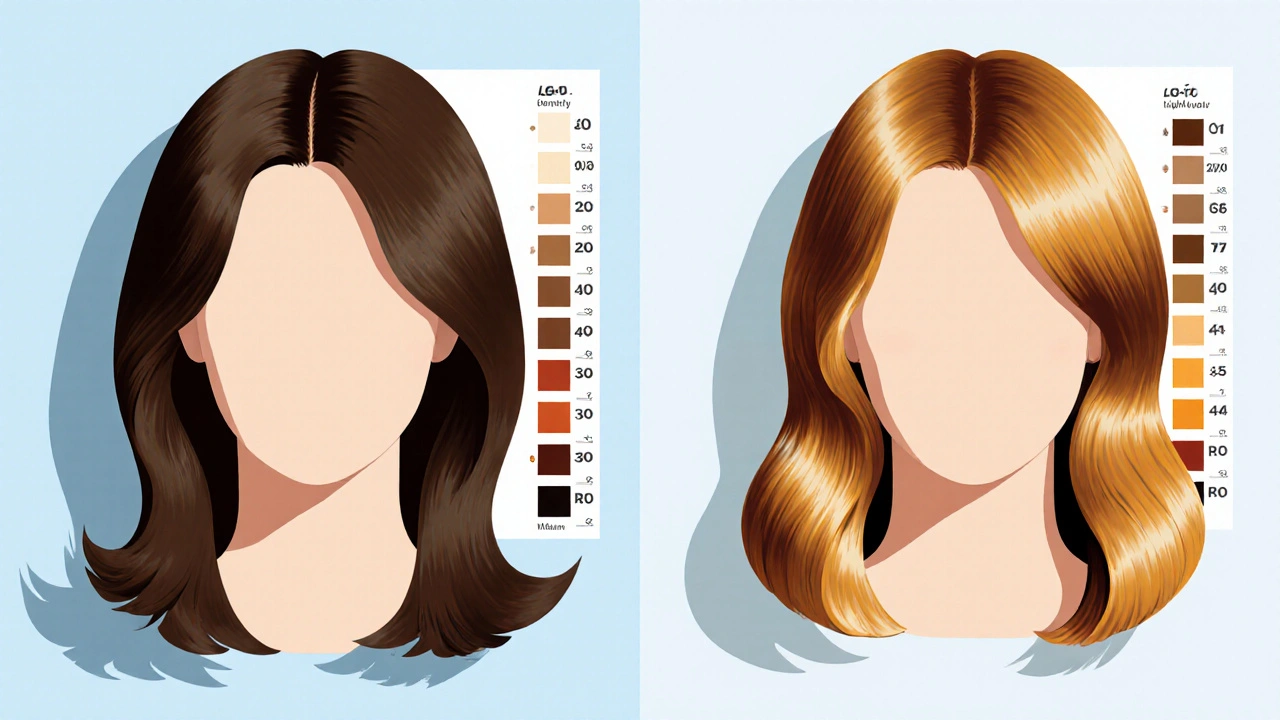
Factors That Influence Perception
Even with solid visual clues, several external factors can trick your eye:
- Lighting conditions: Fluorescent lights flatten color, making dark brown look almost black. Natural daylight reveals true depth.
- Hair health: Damaged or porous hair reflects light differently, often lightening the appearance of dark shades.
- Background colors: Wearing a dark shirt can make hair appear lighter, while a white backdrop does the opposite.
- Personal bias: People may label their own hair “medium” because it sounds more youthful, even if it’s technically dark.
Keeping these variables in check-by checking your hair in natural light, with clean strands, and against a neutral background-gives you the most accurate reading.
Practical Tips to Identify Your Shade
Try this quick self‑check at home:
- Wash your hair with a sulfate‑free shampoo and let it air‑dry.
- Stand in a window with bright, indirect sunlight.
- Grab a small section of hair and hold it up against a plain gray card.
- Notice the shadow depth. If the shadow is very dark and the base color looks almost black, you’re likely in the dark brown range.
- Look for warm highlights. If you see a distinct golden or copper glow on the surface, that leans toward medium brown.
For an extra layer of confidence, compare your hair to a printed color chart (many salons keep one). Match the area where the shade looks most like yours-not the whole swatch, just the part that mirrors your hair’s mid‑tone.
When to Choose Dye vs. Embrace Natural
If you discover you’re sitting on the border between medium and dark and you want to shift either way, here’s what to consider:
- Going darker: A semi‑permanent dark brown dye can add depth without harsh chemicals. Look for formulas with low ammonia and conditioning agents to preserve hair health.
- Lightening to medium: To lift a dark brown shade, you’ll need a permanent or demi‑permanent lightener. Expect a few weeks of extra conditioning to keep the hair smooth.
- Maintaining natural: Embrace the natural shade by using color‑preserving shampoos that protect melanin from UV fading. Regular deep‑conditioning treatments help retain shine.
Remember, hair dye is a surface treatment; the underlying melanin still determines the true depth. If you’re after a dramatic shift, consulting a colorist who can assess your base melanin level is worth the extra cost.
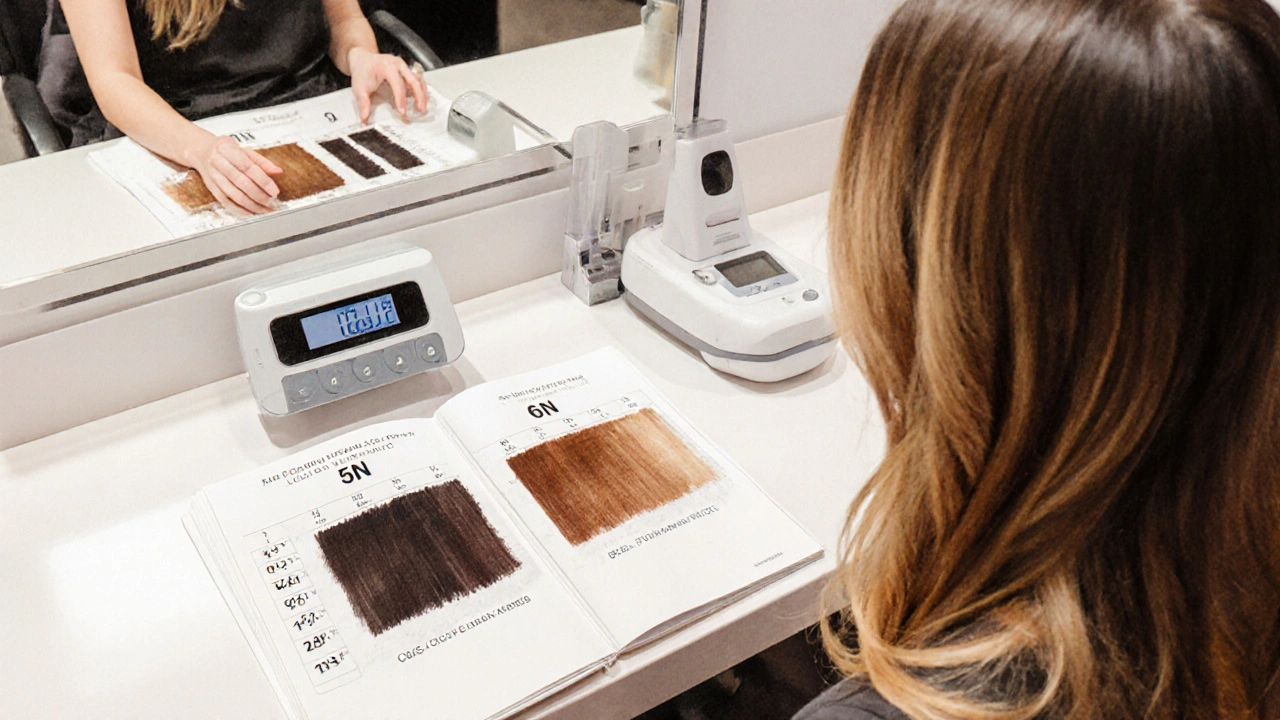
Quick Reference Table
| Attribute | Dark Brown | Medium Brown |
|---|---|---|
| Typical Lightness (0‑100) | 20‑30 | 35‑45 |
| Common Undertones | Cool, ashy, or muted red | Warm gold, copper, or honey |
| Shadow Depth | Deep, pronounced shadows | Moderate shadows, lighter overall |
| Highlight Visibility | Subtle, only 1‑2 shades lighter | Clear amber or caramel highlights |
| Best Matching Skin Tones | Medium to dark complexions | Fair to medium complexions |
| Typical Dye Goal | Deepen, add richness | Lighten, add warmth |
Frequently Asked Questions
Can dark brown hair look blond in the sun?
Yes. Sunlight can cause melanin to break down temporarily, revealing lighter reflexes. The effect is short‑lived and usually more noticeable on hair with warmer undertones.
Is there a standard numeric code for medium brown?
In most professional color charts, medium brown corresponds to 5N (neutral) or 6N, though exact placement can vary by brand.
Do gray hairs affect how dark my brown hair appears?
Gray strands reflect more light, making the overall look slightly lighter. Mixing gray with dark brown can give a highlighted effect without any dye.
How often should I refresh my dark brown dye?
Typically every 4‑6 weeks, depending on how quickly your hair grows and how much you wash it.
Can I use a shampoo for medium brown hair on dark brown hair?
Yes, but look for color‑protect formulas that match your undertone (cool or warm). Using a warm‑toned shampoo on a cool dark brown may subtly shift the hue over time.
Next Steps
Now that you know the key differences, pick a simple test (gray card in natural light) and see where you land. If you’re leaning toward dark brown and love the depth, keep it natural and protect it with UV‑shielding products. If medium brown’s warmth feels more you, a gentle semi‑permanent dye can add that golden glow without a big commitment.
Either way, understanding the science behind the shade takes the guesswork out of hair care and lets you make confident styling choices.

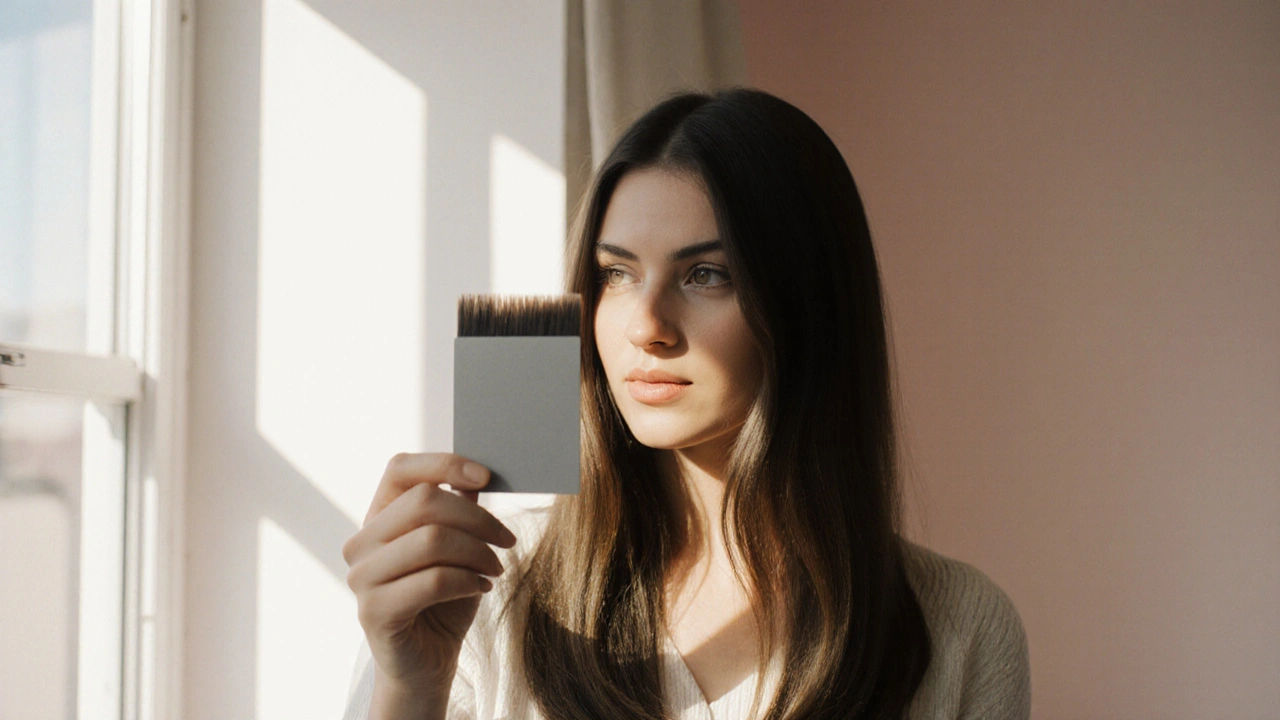
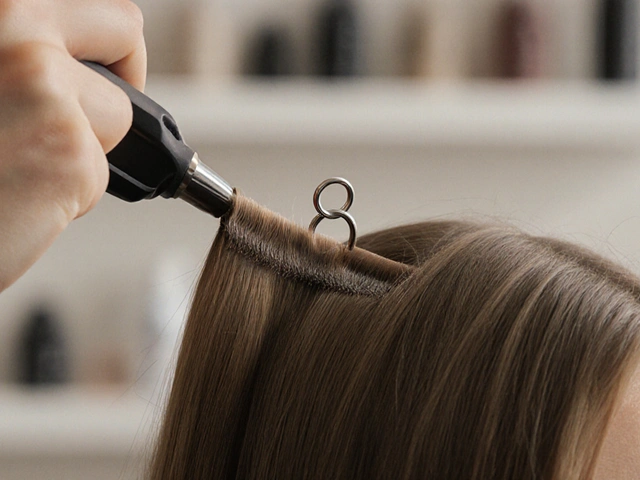
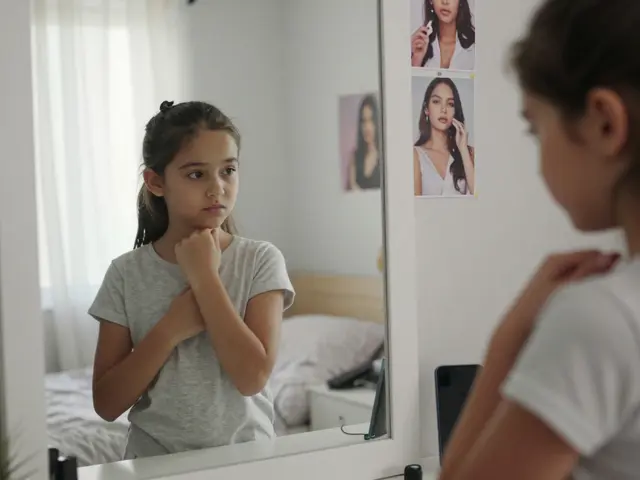
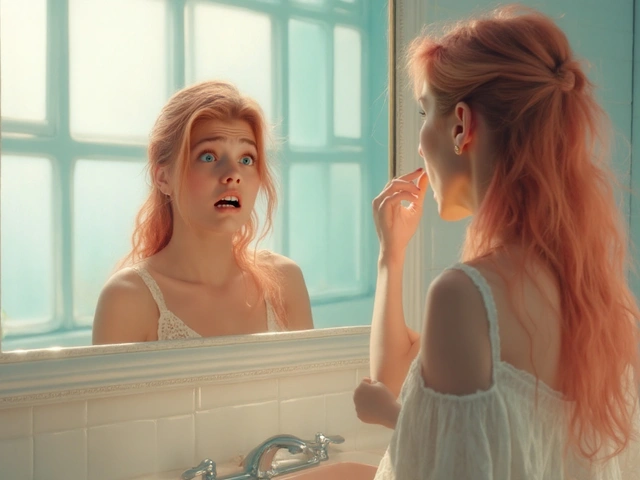

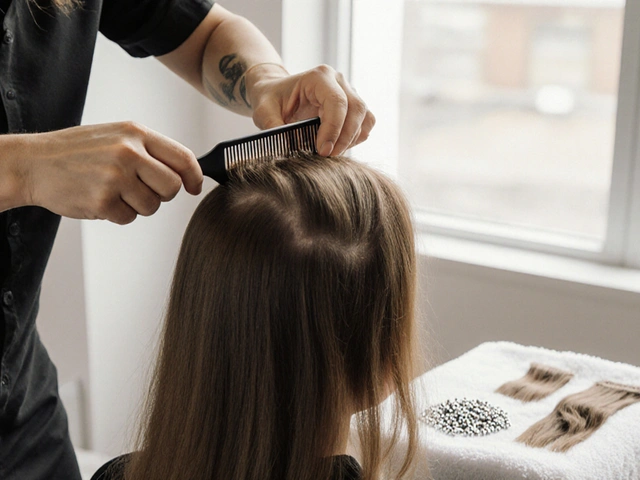
Jasmine Oey
October 22, 2025 AT 03:00Ah, the eternal quest to pinpoint whether your locks belong to the dark brown realm or merely flirt with the medium shade! Let us embark on this chromatic odyssey with the reverence of a scholar and the flair of a poet. First, consider the shadows that your hair casts in the golden hour; dark brown hair drapes the scalp in velvety umbra, while medium brown allows a whisper of light to escape. If you find yourself squinting to differentiate, that is a hallmark of the subtle overlap the industry loves to obscure. Observe the undertones: a warm honey glint reveals a medium brown heart, whereas a muted ash sigh signals the darker spectrum. Turn your head towards a plain gray card-you’ll see the contrast like a chiaroscuro painting. Should the reflection appear almost black, you have crossed the threshold into the 20‑30 lightness bracket. Conversely, a gentle amber halo tells the tale of a 35‑45 rating, comfortably seated in the medium zone. Do not be fooled by fluorescent illumination; those harsh tubes can masquerade dark brown as midnight black. Natural daylight, by contrast, is the impartial judge that reveals the true depth of melanin. Remember, damaged strands act like diffused glass, scattering light and masquerading as a lighter shade. A healthy, well‑conditioned mane will hold its hue with the fidelity of a master’s brushstroke. If you are still uncertain, a quick swipe of a semi‑permanent dye can subtly push the color one notch deeper, granting you the decisive evidence you crave. But beware the temptation to over‑process; the hair’s integrity matters more than a fleeting Instagram aesthetic. In the end, whether you bask in the richness of dark brown or the warmth of medium, the choice is yours to own with confidence. Embrace the science, trust your eyes, and let your crown tell its own story.
Marissa Martin
October 22, 2025 AT 03:17It is essential to approach hair color with humility, recognizing that society often glorifies lighter tones as more desirable. By celebrating the depth of dark brown, we resist the pressure to conform to fleeting trends. Each individual’s natural melanin is a gift that should be honored rather than masked. When we speak of medium versus dark, let us do so with respect for personal identity. The true beauty lies in authenticity, not in a manufactured hue.
James Winter
October 22, 2025 AT 03:34Dark brown sits lower on the lightness scale than medium brown. The difference is measurable and not a myth. Trust the numbers, not the hype.
Aimee Quenneville
October 22, 2025 AT 03:51Wow-so you actually need a *science* lesson to tell if your hair is dark or medium??! I mean, who has time for that when you can just stare at a mirror and *pretend* you know. Seriously, just grab a gray card and call it a day, ok??!
Cynthia Lamont
October 22, 2025 AT 04:08Let’s be clear: the world of brown hair is not a trivial matter, it is a battlefield of light and shade! When the shadow deepens, the soul of the hair speaks in hushed tones that only the keen eye can hear! Medium brown, with its golden whispers, shouts confidence in the daylight! Dark brown, cloaked in cool ash, whispers secrets of depth and mystery! Your scalp is the stage upon which this drama unfolds, so treat it with reverence! Stop guessing and start observing the real cues, because the truth is right there.
Kelley Nelson
October 22, 2025 AT 04:25Your exposition, while admirably thorough, could benefit from a more concise articulation of the pivotal criteria. The reliance on an extensive lexical palette, though evocative, may deter readers seeking pragmatic guidance. A succinct delineation of shadow depth versus undertone would enhance accessibility. Nevertheless, your dedication to the subject matter is evident and commendable. I trust that future revisions will balance eloquence with brevity.
Aryan Gupta
October 22, 2025 AT 04:42It is worth noting that many commercial hair‑color manufacturers embed undisclosed pigments designed to alter perceived shade over time. These additives, often sourced from restricted chemical pools, can shift a dark brown hue toward a lighter appearance under specific lighting. Such practices are rarely disclosed in standard product literature, fueling speculation about industry transparency. Consumers should therefore remain vigilant, testing their hair under natural daylight before drawing conclusions. Awareness of these hidden variables is essential for an accurate self‑assessment.
Fredda Freyer
October 22, 2025 AT 04:58Your point about measurable differences is spot on, and I’d like to expand on how everyday folks can apply this knowledge without a lab. First, acquire a neutral gray card-preferably matte-to avoid reflective distortion. Second, examine your hair in diffused natural light, such as near a north‑facing window on an overcast day. Third, note the intensity of shadows along the curl; if they are pronounced, you are likely in the dark brown range. Fourth, look for warm highlights; a visible amber sheen suggests a medium brown base. Fifth, compare these observations to a printed color chart found at most salons, focusing only on the central swatch area. Finally, remember that hair health influences perception-well‑conditioned strands reflect light more evenly. By following this systematic approach, you can confidently categorize your shade without costly equipment.
Gareth Hobbs
October 22, 2025 AT 05:15Obviously, the whole ‘need a science lesson’ rhetoric is a symptom of the larger agenda pushed by the beauty cartel!!! They thrive on confusing consumers so they can sell overpriced dye kits that contain undisclosed bleaching agents!!! Your casual dismissal of methodology only fuels their profit‑driven narrative!!! People should demand transparency, not settle for half‑hearted guesses!!! The industry’s secret is that they manipulate lighting in salons to mask true color depth!!! Wake up, look at the evidence, and stop buying into the hype!
Zelda Breach
October 22, 2025 AT 05:32The dramatics are noted, but let’s cut through the theatrics and focus on the facts. Dark brown does indeed display deeper shadows, a point you’ve stated with excessive flair. Medium brown’s warmer highlights are also well‑documented, no need for hyperbole. Your advice to observe cues is sound, though the exclamation points are gratuitous. A straightforward approach would serve readers better than a soap‑opera style.
Alan Crierie
October 22, 2025 AT 05:48Absolutely-clear, concise info works best for everyone 😊. If you need any further clarification, feel free to ask!
Nicholas Zeitler
October 22, 2025 AT 06:05Keep it up and enjoy the journey!!!
Teja kumar Baliga
October 22, 2025 AT 06:22Your hair story is uniquely yours, and both shades have their own charm. Embrace what makes you feel confident, whether that's the deep allure of dark brown or the warm glow of medium brown. Remember, community support is always here to celebrate your choice.